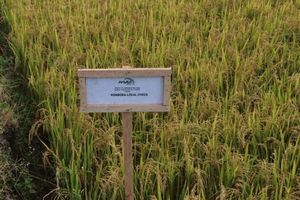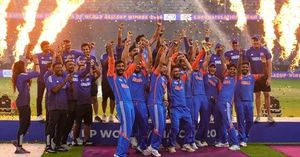In the heart of South Asia, the textile and apparel industries of Bangladesh and India are experiencing pivotal transformations, propelled by both international pressure and homegrown innovation. As the European Union (EU) urges Bangladesh to align its labour laws with global standards, India’s Clothing Manufacturers Association of India (CMAI) quietly continues its decades-long mission of empowering small businesses and driving sustainable growth. Together, these parallel stories reveal how the region’s garment sector is navigating a rapidly changing global marketplace—one stitch at a time.
On August 13, 2025, a high-level European Union delegation arrived at the Dhaka office of the Bangladesh Garment Manufacturers and Exporters Association (BGMEA). Their message, delivered in no uncertain terms, was clear: Bangladesh must urgently bring its labour laws in line with International Labour Organization (ILO) standards if it hopes to maintain its standing with European partners. According to a BGMEA press release, the EU delegation emphasized that stronger worker rights and compliance are not just ideals—they are prerequisites for continued collaboration and market access.
Mahmud Hasan Khan, President of BGMEA, responded by underscoring the association’s commitment to worker welfare. “The welfare of workers remains BGMEA’s top priority,” he stated, affirming support for fair and legal worker demands. To back up these words with action, BGMEA has established zone-based worker welfare centres in Gazipur, Ashulia, Mirpur, and Narayanganj. These centres are designed to address issues like unpaid wages and labour disputes efficiently, offering workers direct support in resolving grievances. Since the current board took office, BGMEA has also held meetings with 81 worker federations, a move aimed at fostering healthier industrial relations throughout the sector.
But the conversation was not one-sided. BGMEA leaders took the opportunity to request that the EU ambassador consider relaxing the 37 percent threshold under the Generalised Scheme of Preferences Plus (GSP+). This technical-sounding policy has very real consequences: relaxing the threshold would help ensure continued duty-free export flow to the EU market, a lifeline for Bangladesh’s garment sector. BGMEA argued that these duty-free benefits not only support Bangladeshi entrepreneurs but also enable EU buyers to source garments at competitive prices—a win-win, if buyers’ sourcing policies reflect these advantages.
EU Ambassador to Bangladesh Michael Miller didn’t mince words about the stakes. As Bangladesh prepares to graduate from its least developed country status, it will soon face full market competition, with no special protections. Miller stressed the importance of prioritizing infrastructure development, particularly at the crucial Chattogram port, and called for improvements in efficiency, capacity, and skills across all key sectors. The message was blunt: adapt now, or risk being left behind in the global race.
Across the border, India’s textile industry is charting its own path through the leadership of the Clothing Manufacturers Association of India (CMAI). Founded in 1963 in Mumbai’s historic mill district, CMAI’s influence now reaches over 20,000 companies, from tiny micro units to global brands like Levi’s. According to The Economic Times, the CMAI’s story is one of quiet but profound transformation, mirroring India’s evolution from post-independence protectionism to global competitiveness.
One of CMAI’s most significant contributions came in 1978, when it spearheaded the creation of the Apparel Export Promotion Council (AEPC). At a time when India’s garment exports were fragmented and fledgling, the AEPC provided the institutional backbone needed to expand into international markets. Today, when Indian apparel appears on shelves from New York to Tokyo, that success can be traced back to CMAI’s far-sighted vision nearly half a century ago. For small exporters, CMAI’s certification is often the difference between smooth customs clearance and costly delays.
CMAI’s focus, however, has always been on the small and medium enterprises (MSMEs) that form the bedrock of India’s $176 billion textile industry. Long before MSME became a policy buzzword, CMAI recognized that the sector’s strength lay in its distributed network of small entrepreneurs. By establishing a network of affiliate testing associations and facilities, CMAI made international quality standards accessible even to the smallest manufacturers—whether in Odisha, Tamil Nadu, or Punjab. This democratization of access has been crucial for enabling MSMEs to compete globally.
Trade fairs organized by CMAI, such as the upcoming North India Garment Fair (NIGF) scheduled for November 25-27, 2025, have become lifelines for small manufacturers. More than 95% of NIGF exhibitors are MSMEs from across India, offering them a rare opportunity to meet retailers, wholesalers, e-commerce representatives, and international buyers under one roof. In an industry where connections often make or break success, such platforms are invaluable.
CMAI’s role doesn’t end with advocacy or trade promotion. It acts as a crucial interface between government policy and industry reality. Policymakers frequently rely on CMAI’s insights to gauge the practical impact of regulations on market access, credit, and the ease of doing business. The association’s proactive approach extends to sustainability as well. In 2019, CMAI partnered with India’s Ministry of Textiles, the United Nations in India, and Reliance Brands Limited to launch SU.RE (Sustainable Resolution), an initiative designed to move the industry toward more sustainable fashion. Signatories to SU.RE include major brands like Shoppers Stop, Lifestyle, Biba, AND, the Aditya Birla Group, and Being Human—demonstrating that sustainability is no longer a niche concern but a mainstream imperative.
Skill development is another pillar of CMAI’s work. Through apparel training centres in multiple states, the association has trained over 43,000 people and placed nearly 33,500 trainees under the Ministry of Textiles’ Integrated Skill Development Scheme. This commitment to upskilling ensures that India’s textile workforce remains competitive as the industry evolves.
Like many traditional sectors, garment manufacturing has had to adapt to the digital age. CMAI has embraced this shift, helping manufacturers adopt e-commerce and digital marketing. This digital transition proved particularly crucial during the Covid-19 pandemic, when physical trade was disrupted. Companies that had already moved online with CMAI’s help found themselves better equipped to weather the storm, illustrating the value of forward-thinking institutional support.
As India sets its sights on becoming a $5 trillion economy by 2027, the challenges and opportunities facing the garment sector are immense. CMAI’s recent focus on sustainability and technological upgradation shows it is not resting on its laurels. Its real test, however, will be guiding traditional manufacturers through changing consumer preferences while preserving the cost competitiveness that has long been their hallmark.
For those seeking recognition, the ET MSME Awards 2025—co-sponsored by IDBI Bank—are open for nominations until August 31, 2025. This initiative underscores the growing importance of MSMEs in India’s economic landscape and the role of institutions like CMAI in nurturing their growth.
From Dhaka’s negotiation tables to Mumbai’s humming workshops, South Asia’s garment industry is at a crossroads. Whether through regulatory reform or institutional innovation, the choices made today will shape the region’s role in global fashion for years to come.




